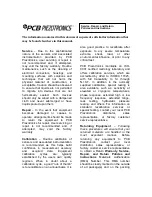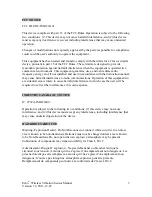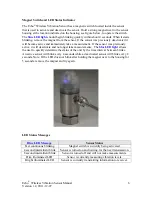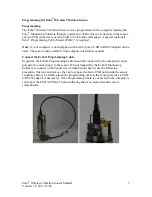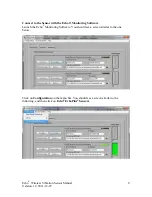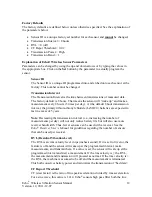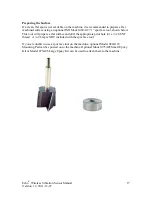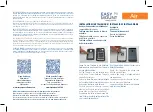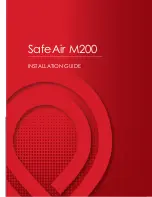
Echo
®
Wireless Vibration Sensor Manual
Version 1.2, 2011-12-07
5
Cap Material and Chemical Compatibility
The sensor cap is made from a translucent polycarbonate material. This material was
chosen because it is tough, allows the transmitted RF signal to radiate out of the sensor,
permits visual feedback provided by the imbedded blue status LED, and reduces the
passage of ultraviolet (UV) rays. However, like any “plastic” material, it is compatible
with some chemicals but not others.
Included here is a general chemical compatibility chart for polycarbonate material taken
from information on the Internet. This data is not guaranteed but is offered as a general
guide to chemical compatibility. It is highly recommended that you look up the
compatibility of you specific chemical with polycarbonate material. If polycarbonate is
not compatible with the processes in your plant, contact IMI for potential options.
Will Damage Polycarbonate
Require Caution
Considered Safe
Alkali bleaches such as sodium hypochlorite Cyclohexanone
Acetic acid
Acetone
Diesel oil
Ammonium chloride
Acrylonitrile
Formic acid
Antimony trichloride
Ammonia
Gasoline
Borax in H
2
O
Amyl acetate
Glycerine
Butane
Benzene
Heating oil
Calcium chloride
Bromine
Jet fuel
Calcium hypochlorite
Butyl acetate
Concentrated perchloric acid Carbon dioxide
Sodium hydroxide
Sulfur dioxide
Carbon monoxide
Chloroform
Turpentine
Citric acid 10%
Dimethylformamide
Copper(II) sulfate
Concentrated hydrochloric acid
Ethyl alcohol, i.e. ethanol 95%
Concentrated hydrofluoric acid
Ethylene glycol
Iodine
Formaldehyde 10%
Methanol
Hydrochloric acid 20%
Methyl ethyl ketone
Hydrofluoric acid 5%
Styrene
Isopropyl alcohol
Tetrachloroethylene
Mercury
Toluene
Methane
Concentrated sulfuric acid
Oxygen
Xylene
Ozone
Cyanoacrylate monomers
Sulfur
Urea
Water


